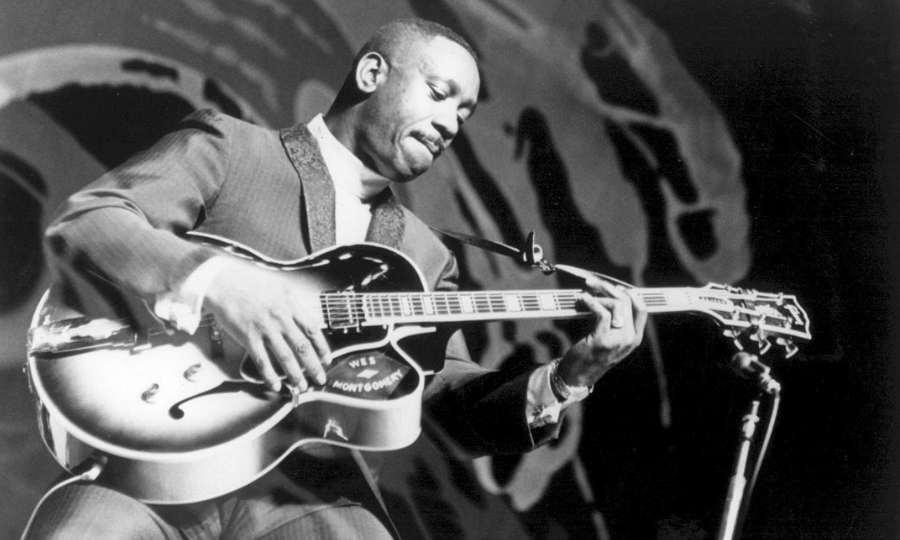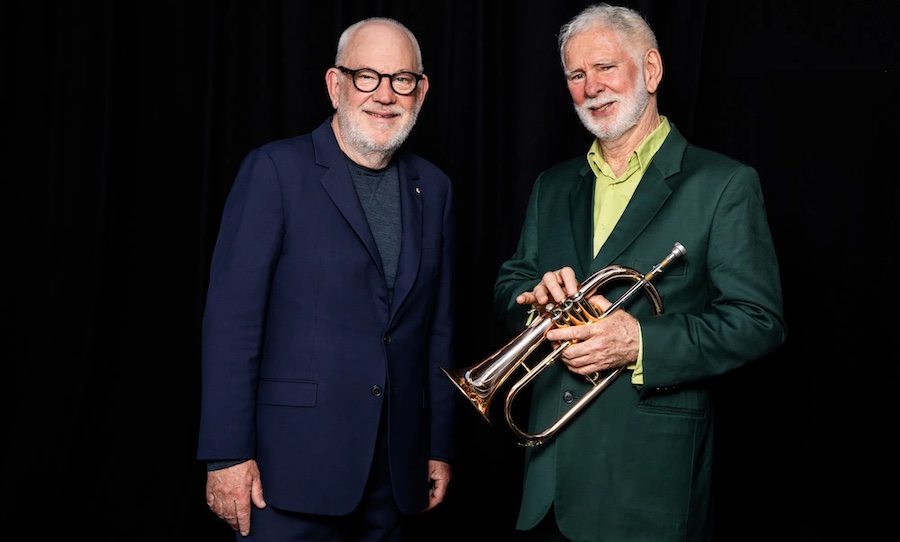As far as jazz guitar goes, there are very few who can top the chops and natural talent of Wes Montgomery. Since his 1960 breakthrough album, The Incredible Jazz Guitar Of Wes Montgomery, the autodidact aficionado was shot to fame in his thirties before suffering a fatal heart attack in 1969, age 45.
His knack for utterly mesmerising, flowing solos, incorporating lightning fast use of octaves and single note arpeggiated lines birthed an entire style of guitar unto itself. Furthermore, Montgomery used his thumb, instead of a plectrum, to create a soft attack on his Gibson L-5 without suffering a loss of rhythmic drive.
It was this deep musicality, fearsome chops and incredible use of octaves that have made Wes Montgomery a leading influence in jazz.
Here is a guide to getting into Wes Montgomery in 5 essential albums.

When they named his first album The Incredible Jazz Guitar Of Wes Montgomery, they weren’t kidding. Here is a guide to Wes in 5 definitive albums.
Humble Beginnings
Born in Indianapolis in 1923, Wes Montgomery frequented the local clubs to support his large brood of children. His high visibility and vivid intensity made him something of a local legend.
Orrin Keepnews, founder of Riverside Records and Chet Baker’s producer, was urged in 1959 by Cannonball Adderley to check out the unassuming jazz prodigy from the Midwest.
“Prompted by Cannonball’s enthusiasm, I flew out to Indianapolis, checked into a hotel and went straight to the place where he was doing his regular evening gig,” said Keepnews. “Shortly after that, after a short rest period, we all went on to the Missile Room, which was something like a 2 to 6 a.m. situation. As the sun rose over Indianapolis, we signed a contract.”
Wes recorded 10 albums with Riverside Records between 1959-64. Orrin Keepnews was more interested in representing Wes as a genuine jazz artist, making him a household name in jazz. He also produced some of his finest work.
When Wes signed with Verve Records in 1964 he was handled as a pop star and sold as such. However, it’s his early recordings with Riverside that shine true as his all time greatest work.
The Incredible Jazz Guitar Of Wes Montgomery (1960)
The best place to start with Wes Montgomery is his 1960 breakthrough The Incredible Jazz Guitar Of Wes Montgomery. The pace is lightning fast and Wes doesn’t miss a beat. When Wes started recording he did so a fully formed artists, making this record as good as any other.
Produced by Keepnews, and backed by Tommy Flanagan on piano, Percy Heath on bass, and Albert Heath on drums it’s the ultimate gateway drug to the wonderment that is Wes Montgomery.
Smokin’ At The Half Note (1965)
Recorded live in June, 1965 at the Half Note Club in New York City, the tone on Montgomery’s guitar is so insanely perfect you feel like he’s sitting right next to you.
A remarkably good mix for a live album from the mid sixties, the record combines guitarist Montgomery with the Miles Davis rhythm section from 1959–1963 of Wynton Kelly, Paul Chambers, and Jimmy Cobb. Wanna hear some smoking’ hot jazz in the clubs were it was born.
This is the ultimate Wes Montgomery record.
Full House (1962)
Wes Montgomery was already a capital city on the jazz map in 1960 following the release of The Incredible Jazz Guitar of Wes Montgomery. He would proceed to cut five more records as a leader before waxing his first live album at Berkeley’s Tsubo Jazz Club.
Cut three years prior to Smokin’ At Half Note, Wes doesn’t possess the powerful alchemy of the Wynton Trio but it doesn’t stop him lighting up the floor. The title track would become a mainstay in his repertoire for his remaining years.
Tequila (1966)
After leaving Riverside Records, Wes signed with Verve to lush up his backing band and become a more sales driven unit. By this time he was already a jazz star, yet his continuing work with Verve shot him to new heights.
The first Wes Montgomery album without a keyboardist, Tequila is a Latin inspired album with congas by Ray Baretto and 12 person string accompaniment of violin and cello composed by Claus Ogerman. It’s a richer sound world for Wes and features some of his best playing yet however it doesn’t share the organic feel of Full House.
A Day In The Life (1967)
Recorded exactly one year before his death, A Day In The Life was one of the last records Wes would issue as a leader and the first of three with A&M Records. While it is certainly one of Montgomery’s more commercial records it features covers of Beatles tracks A Day In The Life and Eleanor Rigby.
Another cover of Percy Sledge’s classic When A Man Loves A Woman has some of that classic Wes cool though it’s sometimes blotted by the overbearing string arrangement. The Joker bookends the record with an infectious Afro groove and rounds things out nicely.
A must if you want the whole Wes picture but not necessarily his finest work.
While we’ve got you, check out:



